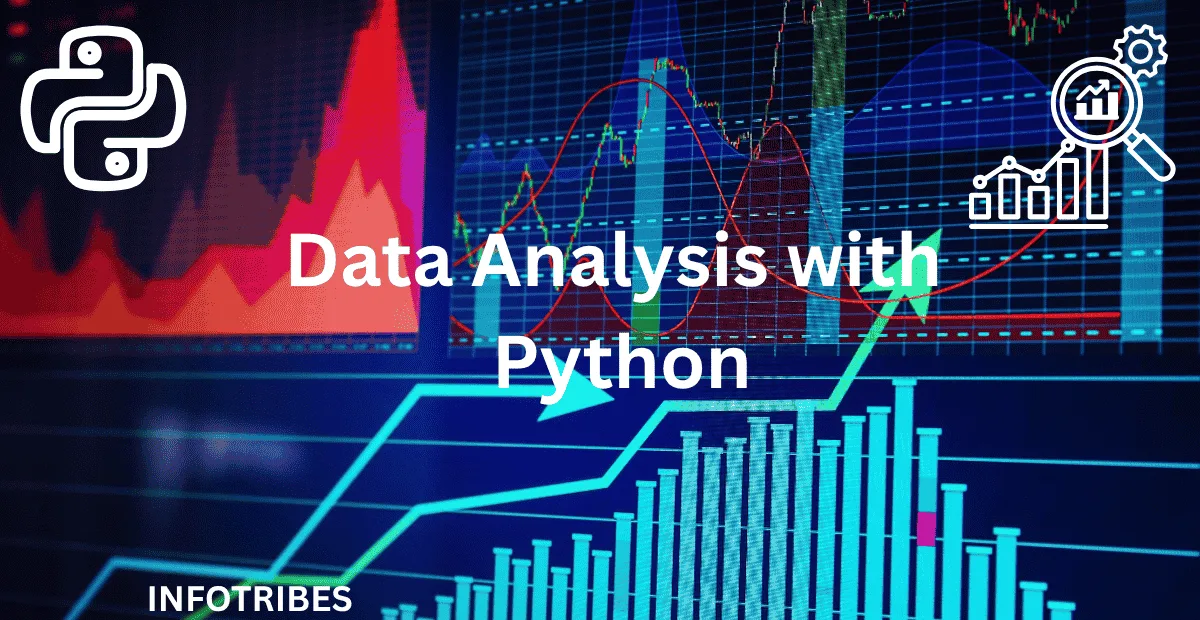In today’s data-driven world, extracting meaningful insights from raw information is the ultimate competitive advantage. Python for data analysis has emerged as the undisputed champion in this arena, transforming complex datasets into actionable intelligence. From startups to Fortune 500 companies, Python’s versatility and power fuel decision-making across industries.
Why Python Dominates Data Analysis
Unlike specialized tools, Python provides an end-to-end ecosystem for data workflows. Its simplicity enables analysts to focus on insights rather than complex syntax, while its scalability handles terabytes of data through distributed computing frameworks like Dask. The secret sauce? Python’s open-source libraries create a seamless analytical pipeline:
wanna know 10 ways how we use ai in our daily life? click here
Data Wrangling with Pandas:
- DataFrames revolutionize tabular data manipulation
- Missing value handling:
df.fillna() - Merge operations:
pd.merge()joins disparate datasets
Scientific Computing via NumPy:
- Lightning-fast array operations
- Mathematical functions (e.g.,
np.log(),np.std())
Visualization Powerhouses:
- Matplotlib: Foundational plotting (
plt.scatter(),plt.hist()) - Seaborn: Statistical visualizations (heatmaps, distribution plots)
- Plotly: Interactive dashboards
Machine Learning with Scikit-learn:
- Unified API for models:
model.fit(),model.predict() - Preprocessing tools like
StandardScaler()
The Python Data Analysis Workflow
Case Study: E-commerce Sales Optimization
Data Acquisition:
import pandas as pd
sales_data = pd.read_csv(‘ecom_sales.csv’)
user_logs = pd.read_json(‘user_activity.json
Data Cleaning:
# Handle missing values
sales_data[‘price’].fillna(sales_data[‘price’].median(), inplace=True)
# Remove outliers
q1, q3 = sales_data[‘order_value’].quantile([0.25, 0.75])
sales_data = sales_data[~((sales_data[‘order_value’] < (q1 – 1.5*iqr)) | (sales_data[‘order_value’] > (q3 + 1.5*iqr)))]
Exploratory Analysis:
# Cohort analysis
cohorts = sales_data.groupby([‘signup_month’, ‘purchase_month’]).agg({‘user_id’:’nunique’})
sns.heatmap(cohorts, annot=True)
Predictive Modeling:
from sklearn.ensemble import RandomForestRegressor
model = RandomForestRegressor()
model.fit(X_train, y_train) # Features: user demographics, past purchases
predictions = model.predict(X_test) # Forecast lifetime value
Real-World Impact
- Netflix: Uses Python’s Surprise library for recommendation engines
- NASA: Processes satellite imagery with NumPy arrays
- Healthcare: Predicts disease outbreaks using Pandas time-series analysis
Why Companies Choose Python for Data Analysis
The explosive adoption of Python for data analysis stems from unique advantages:
- Integration Capabilities: Connects with SQL databases (
sqlalchemy), cloud platforms (AWS boto3), and big data tools (PySpark) - Reproducibility: Jupyter Notebooks enable shareable, executable documentation
- Cost Efficiency: Eliminates expensive software licenses
- Talent Pool: 15.7 million Python developers worldwide (SlashData 2023)
Why Python for Data Analysis Dominance
The Python for data analysis ecosystem thrives through:
- Cross-Domain Flexibility: From genomics to astrophysics
- Community Support: 1.4 million Stack Overflow Python questions
- Continuous Innovation:
- Polars: Rust-based DataFrame library (5x faster Pandas)
- Streamlit: Turns analysis into apps in <50 lines
- Integration Power:
- # Seamless workflow example
- snowflake.connector.connect(…) # Extract
- pandas_profiling.ProfileReport(df) # Explore
- mlflow.log_model(rf_model, “model”) # Deploy
The Future: Python in Next-Gen Analytics
Emerging frontiers where Python for data analysis leads:
- Quantum Computing: Qiskit simulates molecular structures
- Edge AI: TinyML deploys models on microcontrollers
- Generative Models:
- from diffusers import DiffusionPipeline
- pipeline = DiffusionPipeline.from_pretrained(“stabilityai/stable-diffusion-xl-base-1.0”)
- pipeline(prompt=”data visualization of climate change effects”).images[0]
Conclusion
From cleaning messy datasets to deploying machine learning models, Python for data analysis provides an unparalleled toolkit for transforming raw data into strategic assets. Its library ecosystem continues to evolve—recent additions like Polars (for faster DataFrame operations) and Streamlit (for instant web apps) solidify Python’s position as the lingua franca of data professionals. Whether you’re analyzing sales trends or predicting climate patterns, Python delivers the flexibility, power, and community support needed to turn information into innovation.
Wanna learn about ai in healthcare? click here?
FAQ: Python for Data Analysis
Q1: Can Python handle big data analysis?
A: Absolutely. With libraries like Dask (parallel computing) and PySpark (distributed processing), Python scales to petabyte-scale datasets. Tools like Vaex enable billion-row analysis on consumer laptops.
Q2: How does Python compare to R for statistics?
A: Python matches R’s statistical capabilities through SciPy and StatsModels, while offering superior general-purpose programming. Python dominates in machine learning integration and production deployment.
Q3: What hardware is needed for Python data analysis?
A: Basic analysis runs on any modern laptop. For large datasets:
- Minimum: 8GB RAM, SSD storage
- Ideal: 16GB+ RAM, multi-core processor
- Cloud options: Google Colab (free GPU), AWS SageMaker
Q4: Is Python suitable for real-time analytics?
A: Yes. Libraries like Streamlit build real-time dashboards, while Apache Kafka (via kafka-python) processes streaming data. Financial institutions use Python for millisecond trading analytics.
Q5: How long does it take to learn Python for data analysis?
A: With daily practice:
- Basics: 2-4 weeks
- Core libraries (Pandas/NumPy): 1-2 months
- Machine learning: 3-6 months
Online platforms like DataCamp offer structured learning paths.
Q6: What are common pitfalls for beginners?
A: Top mistakes:
- Not using vectorized Pandas operations (avoid loops!)
- Ignoring categorical data optimization
- Skipping data normalization before modeling
- Overcomplicating visualizations
Q7: Which industries hire Python data analysts?
A: All data-intensive sectors:
- Finance: Fraud detection, risk modeling
- Healthcare: Patient outcome prediction
- Retail: Demand forecasting, customer segmentation
- Tech: A/B testing, user behavior analysis
(LinkedIn lists 150K+ Python data analyst jobs globally)
click here to read our latest article on ai generated influencers.
